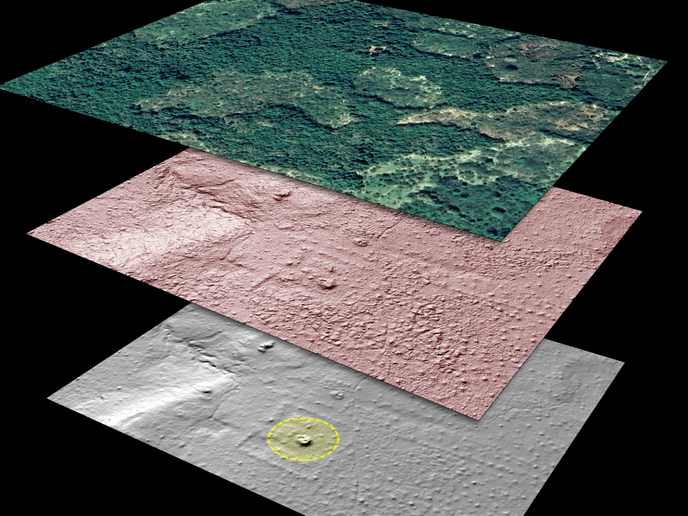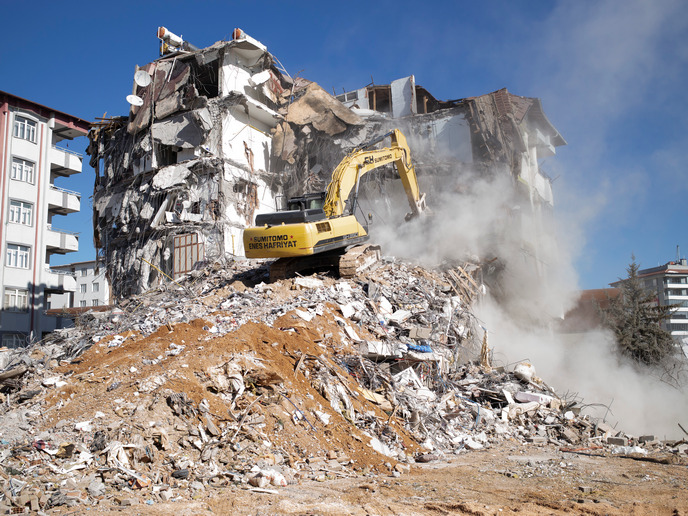Pinpointing archaeological looting with laser precision in near-real time
When rogue actors illegally excavate – and steal artefacts from –archaeological sites, they are not just irreversibly destroying the historical context of such sites and the information they would have provided. They are simultaneously depriving the local people and entire nations of their cultural heritage and identity. Earth observation data can help but it is limited, particularly in areas with dense vegetation. Airborne LiDAR, short for ‘Light Detection And Ranging’, can record 3D topography with high accuracy and is widely used in archaeology for mapping landscapes under heavy vegetation. However, it had never been used for spotting archaeological looting. With the support of the Marie Skłodowska-Curie Actions programme, the OPTIMAL project was the first to do so, using LiDAR to detect looting pits.
LiDAR’s light gets through gaps in leaves and branches
LiDAR – a remote sensing method using laser pulses to measure distances to the ground – excels at 3D terrain mapping in dense vegetation because light can get through tiny gaps in forest canopies. Measurements collected via airplane or drone are used to create a detailed 3D ‘point cloud’ showing Earth’s surface features. According to project supervisor Arianna Traviglia of the Centre for Cultural Heritage Technology (CCHT) at the Italian Institute of Technology, “each point in a point cloud represents a precise location in space, forming a dense picture of the landscape. Current archaeological applications of LiDAR – mapping landscapes – convert the point cloud data to a regular grid to produce digital elevation models, which causes information loss.” However, the loss of detail, not an issue for these use cases, affects the ability to detect small looting pits (1–2 metre diameter).
Machine learning methods enhance resolution
A pair of point clouds acquired using LiDAR over the same area at different times (bi-temporal data) provides two detailed and corresponding 3D maps. Nevertheless, using these to detect changes is a challenging task given issues like imperfect alignment of the two 3D point clouds and noise from the LiDAR scanner. OPTIMAL’s approach solved these problems and overcame the unforeseen difficulty of disparity in spatial resolution between the two point clouds due to slight differences in the acquisition system at different times. “OPTIMAL developed the first automated machine learning methods to identify looting activities as changes over time by directly processing individual bi-temporal pairs of high-resolution LiDAR point clouds,” explains MSCA fellow Marco Fiorucci, also of CCHT. The novel unsupervised method uses an ‘optimal transport’ approach that does not require a labelled training dataset. Even better, the results are easy to understand and interpret.
A vision for the future
“Future LiDAR-based systems could provide real-time alerts to law enforcement agencies,” notes Traviglia. This may not only decrease damage but increase arrests as well, multiplying its impact. And the approach has potential applications beyond protecting cultural heritage. “In addition to high resolution for small changes, our methods enable the remote monitoring of large areas, allowing us to detect environmental disasters like floods and wildfires early and increasing our chances of containing these disasters,” Fiorucci adds. OPTIMAL has delivered an important tool with incredible potential to increase the safety and security of people, places and cultural objects around the globe in the face of increasing natural and human threats.
Keywords
OPTIMAL, LiDAR, point cloud, cultural heritage, machine learning, archaeological looting, optimal transport, bi-temporal data, neural network, remote monitoring







